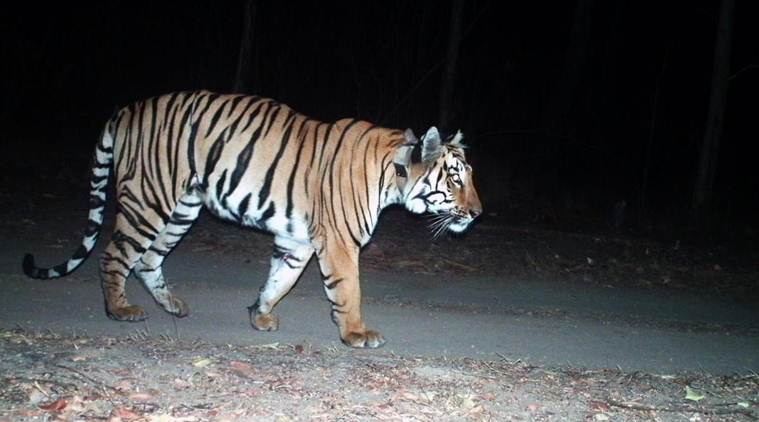- India
- International
Tipeshwar tiger continues journey, returns to Dnyanganga
It has often moved into human-dominated areas but besides once attacking a group of men in Hingoli, the tiger hasn’t harmed anyone.
 The tiger has walked around 1,600 km so far.
The tiger has walked around 1,600 km so far.
It was in June when a sub-adult tiger started his journey from Tipeshwar Wildlife Sanctuary in Yavatmal district. Six months later, it has walked around 1,600 km, reaching Dnyanganga Wildlife Sanctuary in Buldhana district on Friday.
On November 29, the tiger, T1C1, had reached the sanctuary, after walking around 1,300 km. It started towards Ajanta Hills in Aurangabad district on December 12. But after reaching Ajanta Hills, it immediately started for Dnyanganga again. “After travelling up to Soygaon beyond Ajanta Hills, the tiger reached Dnyanganga on Friday,” said Principal Chief Conservator of Forest (Wildlife) Nitin Kakodkar. T1C1 is Dnyanganga’s first tiger.
Pench Tiger Reserve field director Ravikiran Govekar, who also supervises Tipeshwar, said the tiger had travelled 1,500 km till Ajanta. After his return to Dnyanganga, it is estimated to have travelled around 1,600 km — incidentally the longest any tiger in India is known to have walked.
Moving out of Tipeshwar in June, T1C1 had entered Adilabad in Telangana via Pandharkawda, spent a considerable time across inter-state forests between Adilabad and Nanded divisions during August and September, and then walked into the Painganga Sanctuary.
In October, it went to Isapur Sanctuary, also in Yavatmal, before entering Hingoli district of Marathwada, which recorded its first tiger sighting in 40 years. From there, T1C1 went to Washim, Akola and finally Buldhana.

It has often moved into human-dominated areas but besides once attacking a group of men in Hingoli, the tiger hasn’t harmed anyone.
What has baffled officials is the tiger’s intention behind undertaking the journey. “A tiger needs food, shelter and mate. This one had often gone in forest areas but didn’t remain there beyond four to five days. Along the way, it had killed wild preys and cattle. In some areas, like Dnyanganga, there were both good hideouts and food. So, we thought this journey could be for a mate. But is that the real intent? We don’t know yet,” said Kakodkar.
“If it is looking for a mate, it could have further moved towards Muktainagar in Jalgaon, where there are a few tigresses but it preferred to return to Dnyanganga,” he added.
Wildlife Institute of India scientist Bilal Habib, who had radio-collared the tiger and is monitoring its movement, said: “It is most likely searching for a female. It is likely that there might have been some females in areas that he had visited so far but those territories could already have been occupied by other dominant males. So, it is perhaps finding it difficult to get both a territory and mate at one go.”
Habib hoped it would try a different route and head for Melghat Tiger Reserve “where it could finally get all that it needs”.
Apr 19: Latest News
- 01
- 02
- 03
- 04
- 05






































